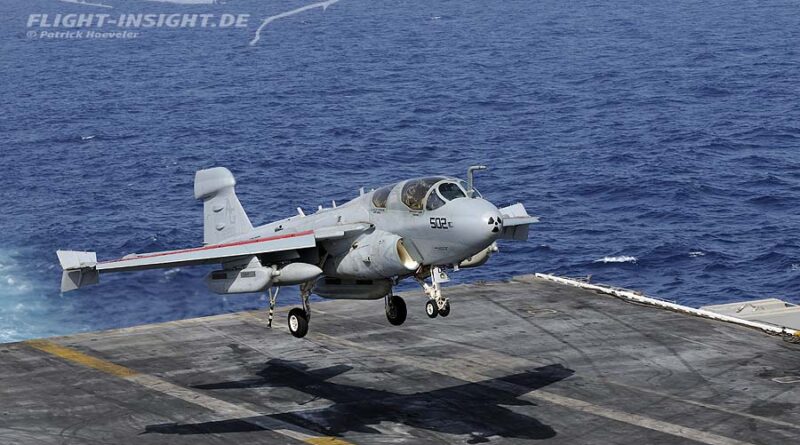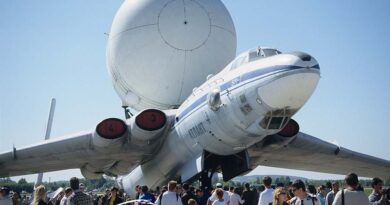Grumman EA-6B Prowler
Die Prowler erfuhr mehrfache Leistungssteigerungen. Die erste Phase mit der Bezeichnung ECAP (Extended Capability) erweiterte das Störspektrum um vier auf acht Frequenzbänder. Das erste Flugzeug ging im Januar 1973 in Dienst. Die zweite Verbesserungsstufe ICAP 1 (Improved Capability) beinhaltete unter anderem modifizierte Cockpit-Ausstattungen und stieß im September 1977 zur Flotte. Der ICAP-2-Standard ersetzte Mitte der 80er Jahre den AYA-6-Computer mit dem neueren AN/AYK-14. Außerdem ermöglichte ein Datenlink die engere Verbindung von zwei Prowler während eines Einsatzes. Später wurde der Anti-Radar-Flugkörper HARM integriert. Die fünfte Ausbauphase (Advanced capability, ADVCAP) wurde jedoch aus finanziellen Gründen nicht verwirklicht. Dafür sollte ICAP III später die Ausrüstung unter anderem um eine Link-16-Datenverbindung erweitert.
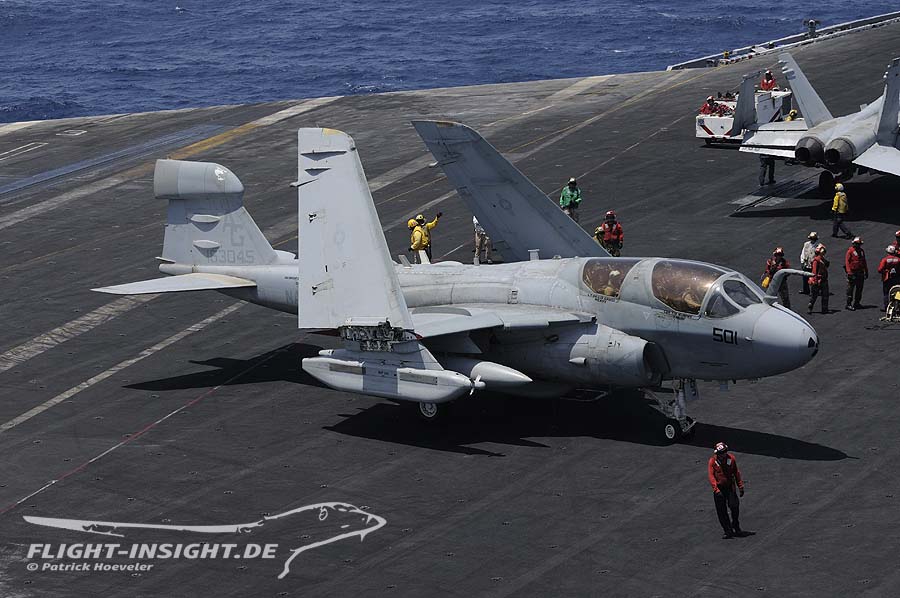
Trotz ihrer Leistungsfähigkeit neigte sich die Karriere der Prowler langsam dem Ende zu. Immer mehr Staffeln rüsteten auf die Boeing EA-18G Growler um. Das erste Exemplar der jüngsten Weiterentwicklung der Super Hornet absolvierte ihren Erstflug am 15. August 2006. Im Juni 2008 übernahm die VAQ-129 die ersten Exemplare. Als erste Einsatzstaffel wechselte die VAQ-132 “Scorpions” auf die Growler. Am 27. Juni 2015 endete schließlich die Karriere der EA-6B bei der US Navy. Das US Marine Corps flog die Prowler noch bis 2019.
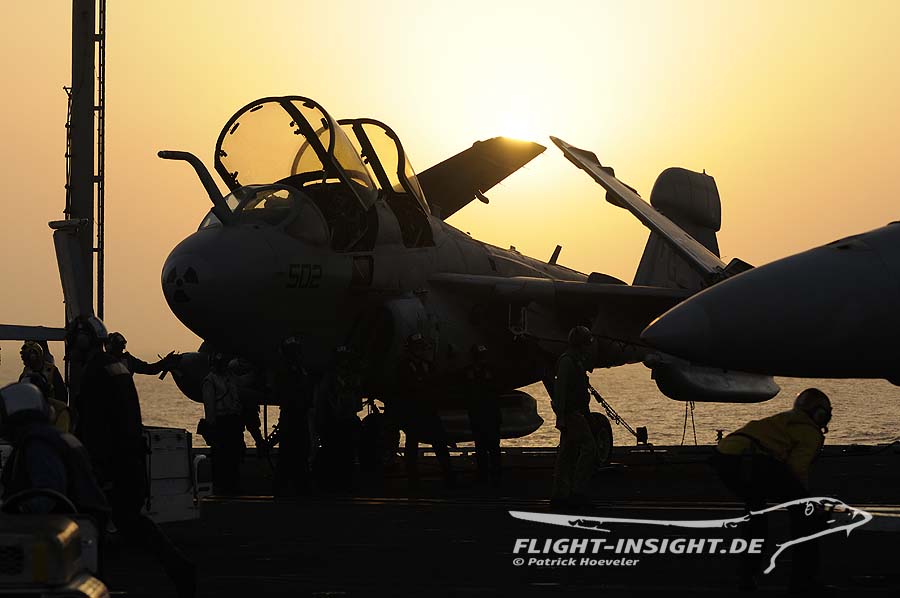
Technische Daten
Besatzung/Crew: 4
Antrieb/Powerplant: 2 Pratt & Whitney J52-P-408 mit je 49,82 kN Schub/thrust
Länge/Lenght: 18,24 m
Spannweite/Span: 16,15 m
Höhe/Height: 4,95 m
Flügelfläche/Wing area: 49,13 m²
Leermasse/Empty weight: 14775 kg
max. Startmasse/Take-off weight: 27688 kg
Höchstgeschwindigkeit/max. speed: 999 km/h
Reisegeschwindigkeit/Cruise speed: 772 km/h
Dienstgipfelhöhe/Service ceiling: 11460 m
Überführungsreichweite/Ferry range: 3233 km
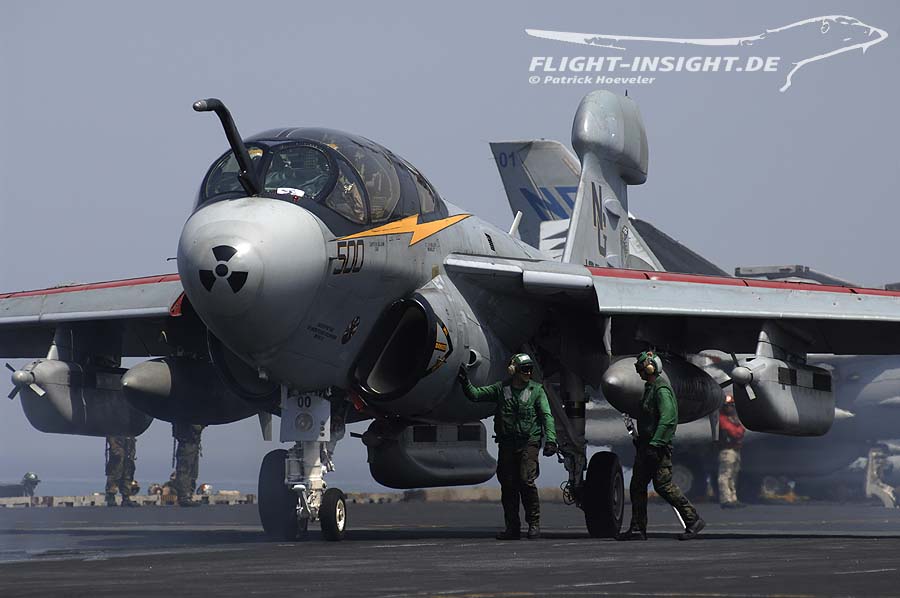
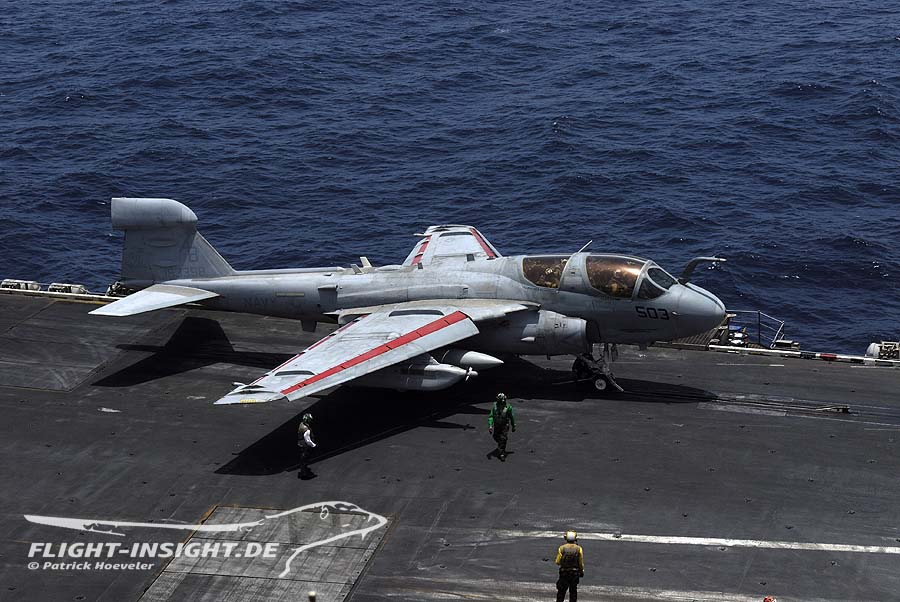
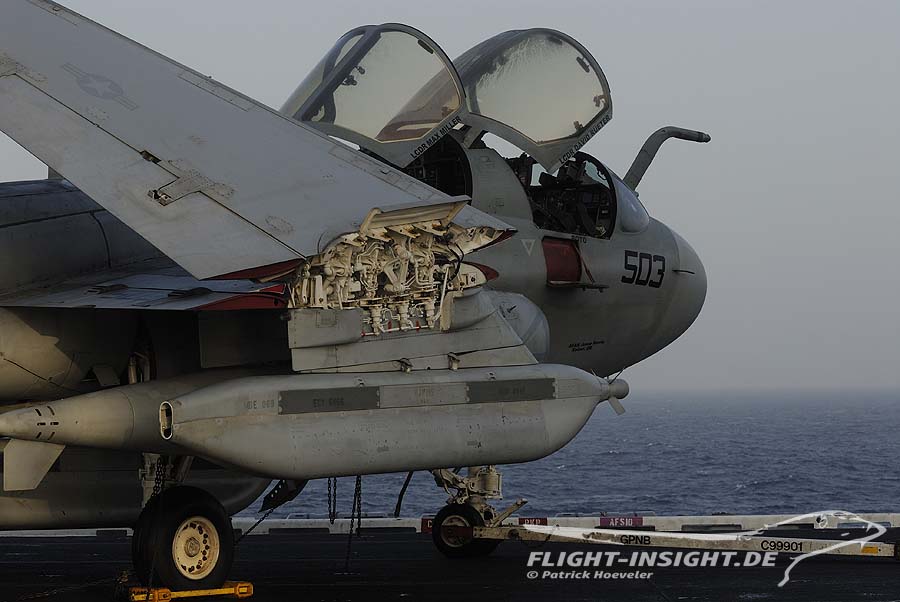
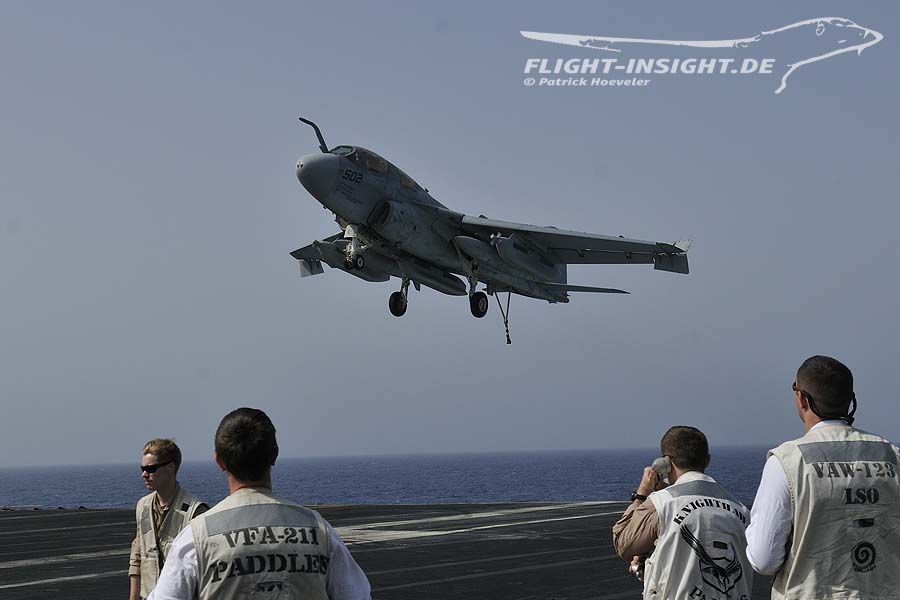
For more than four decades, the Grumman EA-6B Prowler was the backbone of the US Navy’s electronic warfare. As early as the late 1950s, Grumman had begun studying a version of the A2F-1 Intruder (later A-6) for electronic warfare. At that time, the US Marine Corps was looking for a successor to the Douglas F3D Skynight. Eventually, the company produced 28 examples of the EA-6A. It had a fuselage extended by 20.32 centimetres and an antenna fairing on the tail unit. When the model entered service with the Marines in December 1965, the aircraft manufacturer already had an improved variant in the works that relied even more on the use of computers. The Tactical Jamming System consisted of systems integrated into the aircraft and usually four AN/ALQ-99 jammers under the wings. Due to the heavy workload caused by the large amount of data to be processed, the engineers decided to double the crew. To accommodate the two additional Electronic Countermeasure Officers (ECMO), they lengthened the fuselage by a total of 1.36 metres compared to the A-6A. Later, the more powerful J52-P-408 engine from Pratt & Whitney was used. The aircraft, now called the EA-6B Prowler, did not yet have any armament.
Grumman converted several A-6s: The Intruder with the serial number 149481 served as the aerodynamic prototype and took off for its maiden flight on 25 May 1968 from Calverton, New York. Testing of the electronic equipment began on 19 August 1968 with 149479. Despite the complexity of the systems, the test programme went relatively smoothly, allowing the squadron VAQ-129 to take delivery of its first EA-6Bs at Naval Air Station Whidbey Island in January 1971. On 1 July 1971, the first operational squadron was established with VAQ-132, which was already on its way to Southeast Asia with the USS America in June 1972. It was later followed by VAQ-131 on the USS Enterprise. Both units played an important role during the US Vietnam offensive in Operations Linebacker I and II, jamming enemy radar and communications systems to protect their own troops. They flew a total of 720 missions.
The Prowler served with a total of 15 Navy squadrons. The Marines replaced their EA-6A with the four-seat successor at VMAQ-2 in September 1977. In total, the type flew with four USMC squadrons, mostly based ashore at Cherry Point, North Carolina, each of which had five examples. With the retirement of the EF-111A Raven from the US Air Force in the 1990s, the EA-6B took over the ECM role in that branch as well. For this purpose, four Navy squadrons supported the Expeditionary Forces.
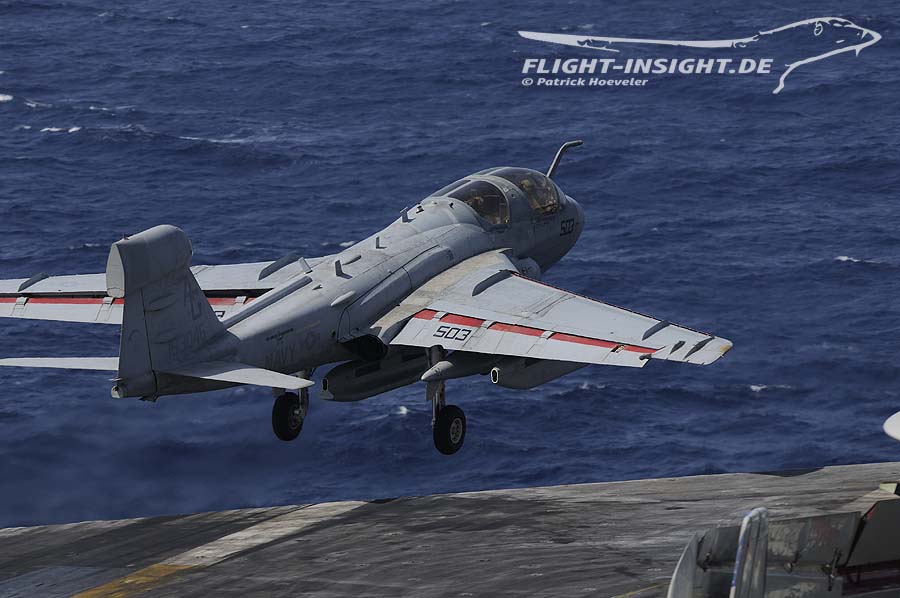
The Prowler underwent multiple performance upgrades. The first phase, called ECAP (Extended Capability), extended the jamming spectrum by four to eight frequency bands. The first aircraft entered service in January 1973. The second improvement stage, ICAP 1 (Improved Capability), included modified cockpit equipment and joined the fleet in September 1977. The ICAP 2 standard replaced the AYA-6 computer with the newer AN/AYK-14 in the mid-1980s, and a data link allowed two Prowlers to be more closely linked during a mission. Later, the HARM anti-radar missile was integrated. However, the fifth expansion phase (Advanced capability, ADVCAP) was not realised for financial reasons. Instead, ICAP III was later to expand the equipment to include, among other things, a Link-16 data link.
Despite its performance, the Prowler’s career was slowly coming to an end. More and more squadrons converted to the Boeing EA-18G Growler. The first of the Super Hornet’s latest upgrade made its maiden flight on 15 August 2006, and VAQ-129 took delivery of the first example in June 2008. The first operational squadron to switch to the Growler was VAQ-132 Scorpions. The career of the EA-6B in the US Navy finally came to an end on 27 June 2015. The US Marine Corps continued to fly the Prowler until 2019.

